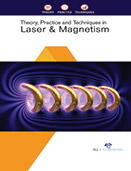Physics

Laser science, mainly intricate with quantum electronics, population transposition, laser construction, quantum electronics, and optical cavity design, is a division of optics that illustrates the theory and practice of lasers. It is also concerned with the physics of laser beam propagation, mainly the physics of Gaussian beams, with laser applications, and with allied fields such as nonlinear optics and quantum optics. It is one of the top technological achievements of 20th century and there are few areas in laser technology that are not influenced by it. It plays an important role in, medicine, industry, and entertainment has resulted in fiber-optic communication, CDs, CD-ROMs, and DVDs. Without lasers there would be no supermarket bar code readers, certain life-saving cancer treatments, or precise navigation techniques for commercial aircraft. In recent years the study of magnetism has rapidly developed fuelled by the availability of femtosecond laser pulses and pump-probe techniques, which lead to spectacular observations of sub-picosecond demagnetization and femtosecond laser-induced switching of magnetic domains. Magnetism has been known for over 2,000 years, and was used early on to develop the compass, whose needles align themselves with the earth’s magnetic field. Nonetheless, the microscopic causes of magnetism were not understood until the development of quantum mechanics at the beginning of the 20th century. One of the most important discoveries was that electrons in a solid behave like tiny compass needles that align themselves with an external magnetic field and also affect each other. The magnetic properties of a solid depend on how adjacent electrons arrange themselves relative to one another. For instance in ferromagnetic substances such as iron, all electrons point in the same direction. In antiferromagnetism, however, each electron points in the opposite direction of its neighbor. The entitled text “Theory, Practice and Techniques in Laser & Magnetism” is an introductory text on laser physics features an emphasis on basic laser principles and theory.
This book: